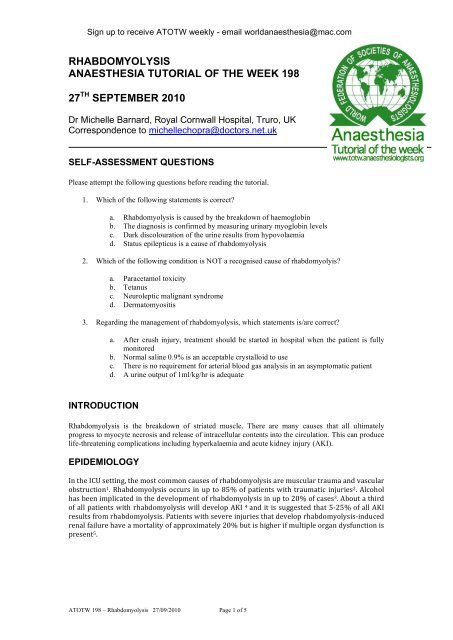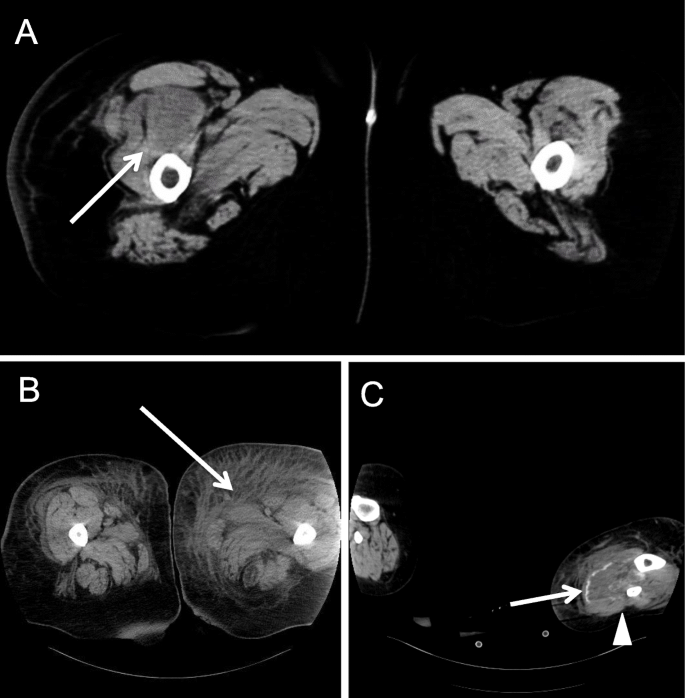There may be features relating to the underlying cause eg swollen and painful muscles paraesthesia of limbs in compartment syndrome or muscle tenderness.
Rhabdomyolysis lying on floor.
The client had been lying in the same position for three days and is diagnosed with rhabdomyolysis.
Rhabdomyolysis is a condition involving damage to the skeletal muscle or muscles of the body.
Common causes of rhabdomyolysis include trauma burns prolonged immobilization excessive exercise medications drug abuse other diseases snake bites and spider bites.
It results from the death of muscle fibers and release of their contents into the bloodstream.
The main symptoms of rhabdomyolysis are muscle aches muscle weakness and darkened urine.
History of a fall followed by long duration of lying on the floor.
Injuries caused by electrical shock third degree burn and lightning strike can also cause rhabdomyolysis.
Ambulate the client tid.
The little old lady found on the floor is a staple of hospital admissions and martha a patient in our group practice was hardly the first i had cared for.
A 90 year old client is admitted to the unit after being found on an apartment floor.
This can lead to.
Muscle breakdown causes the release of myoglobin into the bloodstream.
Called rhabdomyolysis was.
Rhabdomyolysis is the breakdown of damaged skeletal muscle.
A 90 year old client is admitted to the unit after being found on an apartment floor.
Discuss rhabdomyolysis and other causes of myoglobinuria with others.
Rhabdomyolysis is a serious syndrome due to a direct or indirect muscle injury.
Myoglobin is the protein that stores oxygen in your muscles.
Rhabdomyolysis is caused by a breakdown in skeletal muscle and occurs most commonly following trauma very often that can be due to a long lie when a patient is unable to get off a floor until help arrives after a prolonged period.
Infuse normal saline iv at 150ml hr.
Which of the following actions should the nurse take first.
The client had been lying in the same position for three days and is diagnosed with rhabdomyolysis.
Which of the following actions should the nurse take first.


























